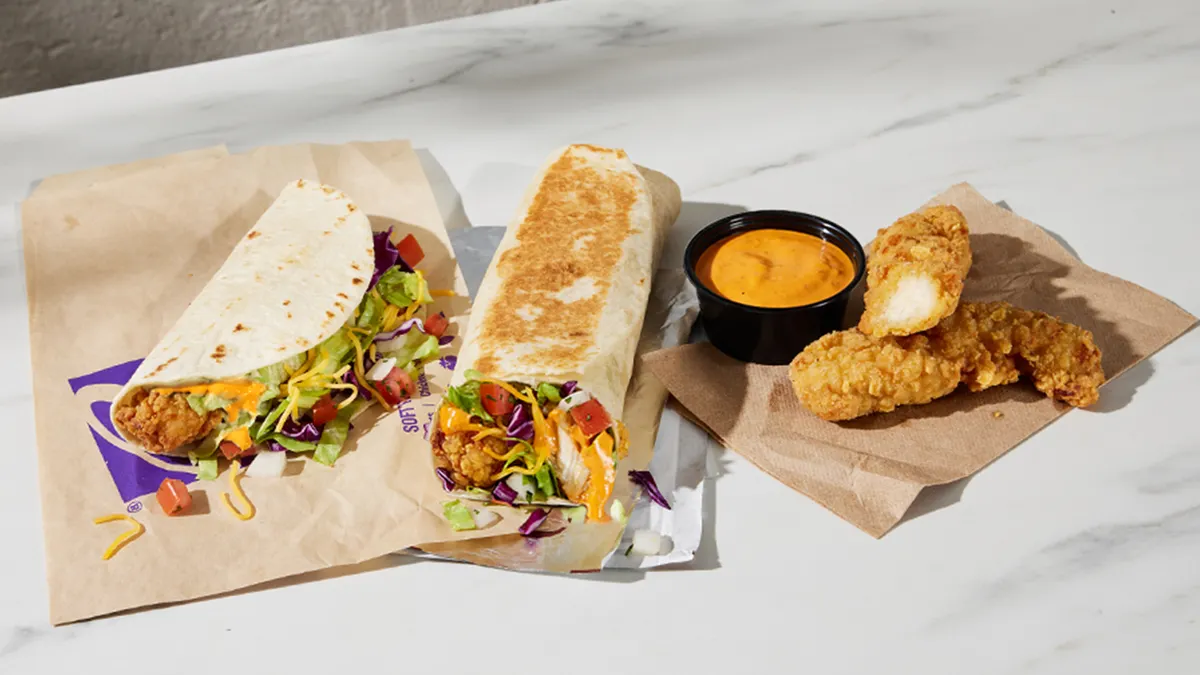The aphorism holds that a rising tide lifts all boats. But the second quarter of 2024 brings to mind a different version of the well-known saying: A decline does not drag everyone down.
The last few months have produced divergent results for restaurants. Consumers pulled back from many chains, like McDonald’s, but kept spending at others, like Wingstop.
So what accounted for the diverging results? It wasn’t pricing, necessarily, since chains that resorted to discounting schemes and promotional campaigns didn’t see a significant shift in sales and traffic. New menu items, a focus on operational fundamentals and strong value proposition for customers seemed to define the successful chains, though many of those that saw traffic declines say they used similar strategies, according to their earnings calls.
Restaurants will need to continue executing a multi-part strategy to battle price sensitivity, since consumer pullback is unlikely to change in the immediate future. Bureau of Labor Statistics Data showed food away from home prices increased 0.3%, 0.4% and 0.4% month-to-month in the three months comprising the second quarter of the calendar year, outstripping both overall inflation and the increase in grocery costs. By the end of June, year-over-year inflation for restaurant prices was almost quadruple the increase in grocery prices.
Restaurant Dive took a closer look at what separated the winners and losers of the quarter.
Winners:
Texas Roadhouse
Texas Roadhouse was the standout brand in full-service, posting a 9% jump in same-store sales in Q2 and revenue surpassing $1.3 billion.
“We continued seeing a resilient guest visiting our restaurants. In addition to strong traffic growth, we also experienced encouraging mix trends within our check,” CFO Chris Monroe said during the company’s Q2 earnings call.
The chain has managed this without resorting to promotions, said Michael Bailen, Texas Roadhouse’s director of Investor Relations.
To continue its sales momentum, Texas Roadhouse is working on a variety of long-term projects, including making changes to its back-of-house tech, which has made life easier for its workers, who no longer have to rely on paper tickets to keep track of orders. One of the brand’s strengths, and a part of its ability to drive sales efficiently, is the long tenure of its employees, which Monroe said led to several quarters of labor productivity increases.
Wingstop
Wingstop’s Q2 saw an eye-popping 28.7% jump in same-store sales — strong enough that the chain set itself a new goal for average unit volume in the future: $3 million.
The company has taken a disciplined approach to price increases, CEO Michael Skipworth said on its earnings call.
Skipworth said the chain’s focus on value is beginning to increase customer frequency.
In particular, Wingstop has seen “a record level of new guests quarter after quarter, and these new guests are coming back to the brand sooner than our traditional guests,” Skipworth said. That has boosted overall frequency at the chain.
Its chicken sandwich, which first launched in 2022, has been key in drawing new customers and converting them to repeat visitors. The menu category opens up a growth opportunity for the chain, Skipworth said.
The chain has been advertising the sandwich in a concerted fashion, highlighting portion sizes and the variety of flavors, ranging from plain fried chicken to its Atomic hot sauce.
“We still haven't come anywhere close to reaching our fair share of the 2.8 billion chicken sandwich servings annually in the U.S.,” Skipworth said.
Chipotle
The king of the Mexican fast casual segment saw its visits rise 8% and its same-store sales grow by 11% year-over-year, according to its earnings release.
The second quarter, which overlaps with Chipotle’s strongest calendar months — so-called Burrito Season — saw strong promotions from the chain, particularly its Chicken Al Pastor protein.
Chipotle has focused on increasing the number of stores with expeditors in recent quarters. By adding that extra worker, the chain estimates it can sell five more entrees per peak 15-minute periods, a significant improvement in throughput.
While other fast casual chains are struggling to rein in wait times, Chipotle’s deployment of the expeditor, rather than its still-early testing of labor-saving automation, seems likely to help the brand stay strong.
Taco Bell
Like Chipotle, Taco Bell saw premium chicken items drive sales growth in Q2. But Taco Bell’s strategy also benefited from a long-term emphasis on value. In January, the brand launched a 10-item value menu. CEO David Gibbs said the value items are particularly appealing to customers because they’re not “junior-sized versions of a core item.”
That strategy of using LTOs and steep discounts to drive traffic continued in Q3, with the widespread launch of its $7 Luxe Cravings box and Cheesy Street Chalupa.
The chain is looking to tech investments, like drive-thru voice AI and back-of-house AI tools to sustain its sales momentum and control costs. The rest of Yum Brands’ U.S. system was less successful, with Pizza Hut, KFC and Habit Burger Grill all reporting same-store sales slides.
Losers:
McDonald’s
The Golden Arches got hammered during the most recent quarter, with guest counts down for the first time in four years. Falling traffic led to a 0.7% decline in same-store sales at McDonald’s U.S.
CEO Chris Kempczinski attributed the shortfall to consumer price sensitivity, particularly among lower-income cohorts.
“As this year progressed, those pressures have deepened and broadened. The QSR sector has meaningfully slowed in the majority of our markets and industry traffic has declined in major markets,” Kempczinski said.
The chain was slow on the deployment of a national value strategy; Burger King’s suite of value products were available nationwide when McDonald’s was still working on the value messaging that eventually became its $5 Meal Deal. That deal rolled out with just five days left in Q2.
Starbucks
Among the major, nationally traded restaurant firms, Starbucks saw an especially large decline in its U.S. traffic: 6% in the quarter.
The reasons for the coffee giant’s sales slump are multi-faceted. In addition to pricing-related consumer drawbacks, Starbucks saw some occasional consumers desert the chain late last year after the brand sued Workers United over a pro-Palestinian tweet. The continued traffic softness is due primarily to declining visits by non-rewards members, CFO Rachel Ruggeri said during its earnings call.
The chain’s workers have struggled to keep pace with highly customized digital orders as well as its entirely new drinks platforms.
Starbucks’ sales slump was spread across multiple countries, with China seeing a 14% drop in comparable sales. Chinese domestic consumption has been restrained by a high savings rate and investment in fixed capital at the expense of consumer purchases — a longstanding, structural feature of the country’s economy.
Perceived problems with Starbucks’ strategy led activist investor Elliott Investment Management to take a significant stake in the company. While Elliot’s demands are not yet public, Starbucks then-CEO Laxman Narasimhan said “our conversations to date have been constructive.”
On Aug. 9, the Wall Street Journal reported that Starboard Value, another activist investor, had also taken a meaningful stake in Starbucks. Then, on Aug. 13, the chain abruptly announced the departure of Narasimhan, and his eventual replacement by Chipotle CEO Brian Niccol.
Jack in the Box
Jack in the Box has been successful in signing development deals this year, including a plan to re-enter the Chicago market after decades away, and a 15-store deal that will bring the chain to Georgia.
But in its fiscal third quarter, the burger chain saw same-store sales fall 2.2% year-over-year, while its Mexican QSR brand, Del Taco, saw its same-store sales decline 3.9%.
Notably, California performed well for both brands, despite the state’s increased fast food minimum wage. While margins declined, the company expects to regain margins through improved sales and upgrades to equipment technology alongside “financial fundamental initiatives,” CEO Darrin Harris said during an earnings call.
In late May, Jack in the Box added its Munchies under $4, a snacking value menu, to drive traffic and stimulate sales across dayparts. Harris said the Munchies menu “didn't drive as much of the traffic as we wanted,” but that it did boost average ticket up towards $14.






















